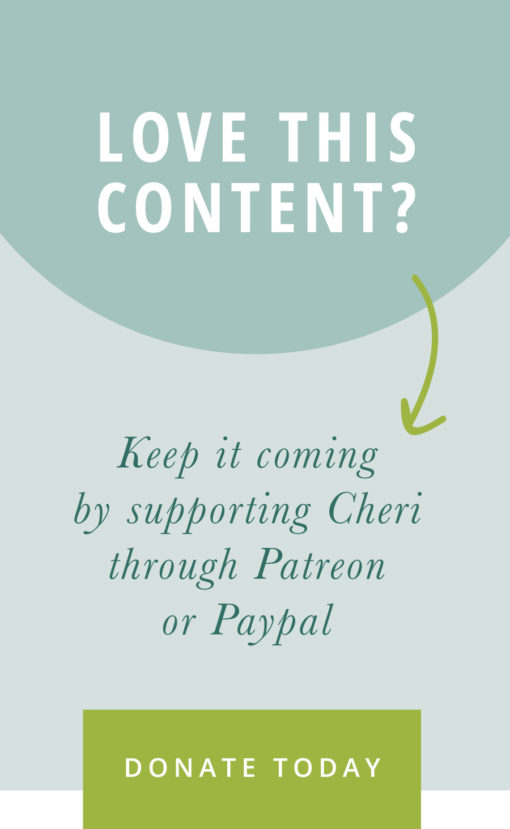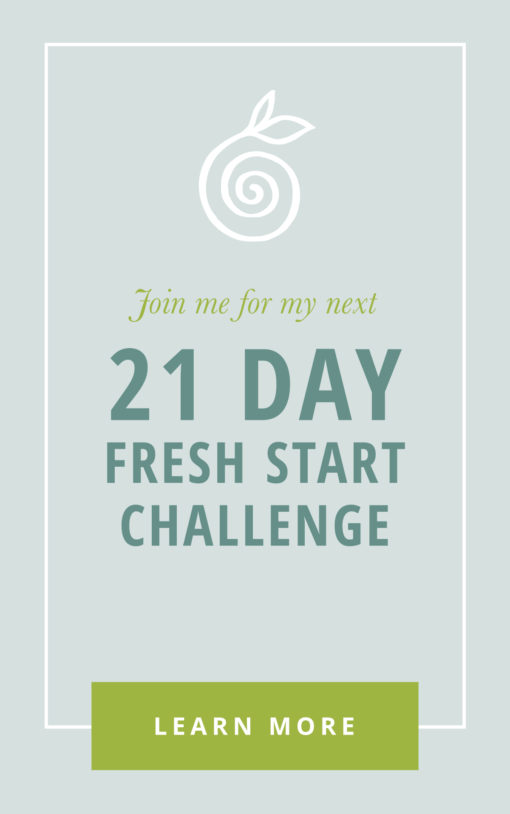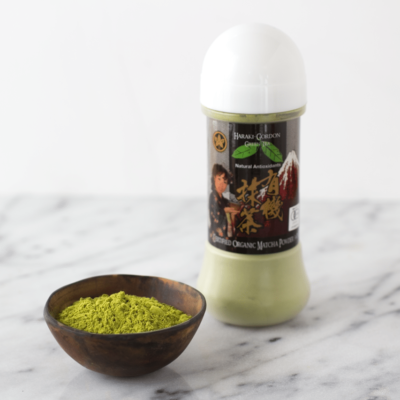Join me for Part 3 of a 4-Part series on the 4 Basics of Eat to Live and Weight Loss. Today we delve into 3 Emotional Tools that you can use on your journey to learn more about the mindset aspect of Eating to Live.
Links Mentioned:
Free 9-Day Eat to Live Challenge: http://www.nourishyourlifestyle.com
Free live 5-day challenges: http://www.nourishyourlifestyle.com/challenge
Eat to Live Family: http://www.nourishyourlifestyle.com/family
*affiliate links
YouTube auto-generated transcript:
welcome back to this four part series on the four basics of eat to live and weight loss
last week we talked about three of my practical weight loss tools
this week we are going to be diving into the more mindset emotional kind of side of things
and we’re going to be learning some emotional tools on mindset
so i’m going to go into five things on this particular podcast the first two
things are two hindrances and then the next three are three
mindset tools so kind of the problem and solution here on this podcast so
let’s go through the hindrances first
i’m gonna give you a couple examples that sort of give you a bit more
explanation of this so number one is the example i love to give
of something called the thought bully
so i imagine this thought bully back in
the day when i used to be really really
addicted to food and say i would have
something in the fridge like oatmeal or
bread or some you know some type of a
carb that was triggering for me in some
way that i would just want to eat it
when i started looking at my thought
patterns i started noticing that every
time i would open the fridge and there
would be something in there or a cupboard or whatever whatever
i would open that fridge and i would see
something prepared that was easy to make
like maybe it was that bread or maybe i
had a container of oatmeal in there or
something when i would see that oatmeal
in there spark all these thoughts this
just like train of automatic thoughts
like there’s the oatmeal you have to eat it
it looks so delicious oh my gosh that’s
gonna be so satisfying so filling and
guess what when you start eating it
you’re just gonna have to eat the whole
thing because you have no willpower you
can’t stop you’re gonna eat that whole thing
you know go ahead just try and shut that
fridge door it’s you’re gonna think
about it the whole time you’ll never be
able to stop thinking about it and
you’re gonna eat the whole thing right
it was this like constant barrage of
this is what you’re going to be doing
and you don’t have a choice
so i had the story in my head like this that every time i was
kind you know come face to face with
something that was tough for me to
resist i definitely wouldn’t be able to resist it
and it would end up being just this huge
binge overeat now i realize you know we
think about the thoughts that we have in our head
and i mean we have thousands and
thousands of thoughts every day so many
of them i mean some you know some
estimates will put us at 6 000 thoughts
per day some will put us up to 60 000
thoughts per day so however many
thoughts we have it’s a lot right and
like half of them or more are negative
and about things that are in the past so
there’s sort of these automatic repeated
thoughts that we’ve just been having for
so long because we’ve been having them
for so long and they end up becoming
beliefs so i want you to think about the
kinds of thoughts that happen in your
brain regularly now you might have never
even thought about this before or
considered this before maybe your your
brain just sort of goes automatically
all the time and you never even really
think about what you’re thinking about
but this is one of the amazing things we
have as humans is this tool this this
type of brain it’s the section of our
brain the prefrontal cortex that allows
us to think about what we’re thinking
about so i challenge you if you’ve never
done this before or if you’re kind if
you feel kind of out of touch with this
start trying to think about what you
think about so notice what are these
little stories that happen in your brain
when you go to restaurants or when
you’re going to a holiday party or you
know it’s the weekend you’re going to go
out with your girlfriends whatever
or just you’re at home and you’re
standing in front of your fridge and you
know you have this inner dialogue about
how you’re never going to be able to
stop eating that food or whatever that might be
or you know you need those appetizers to
make you feel like you’re part of the group or whatever
i’m going to look weird if i don’t order
this these kinds of things right so
start to first become aware look at
these thoughts that are occurring in
your brain and see if you can start to
pick them out and see how they might be
influencing you now i want you to
imagine this idea of the thought bully
now imagine that
you know set of thoughts that i gave you
when i was in front of the fridge is not
very encouraging right like you’re going
to eat all that you have no willpower you want me to stop
those kinds of thoughts are super
negative now imagine that as a person
standing behind you saying that to you
right so this is our thought bully
it’s something that we have in our heads
all the time we might have this
thoughtfully as well when we’re standing
in front of the mirror and we notice
things about ourselves and we’re kind of
just like taking in what our body looks
like oh i don’t like this about my body
i need to change this about my oh my
gosh i have to go on a diet right now
this is horrible how did i let myself
get here right imagine this as an actual person
standing behind us that’s just saying
this to us so let’s just imagine it’s
some guy he’s like 45 you know he’s he’s
standing behind us he never touches us
he just stands behind us and berates us
right he’s kind of a jerk he’s a bully
for sure right he just stands there
behind us and just gives us this
dialogue of what we’re supposed to be
thinking now imagine that that’s your
thoughts okay and if you can think of the thoughts i
had when i stood in front of the fridge a long time ago
that was my story and that’s what my
bully was telling me all the time now
we accept this as normal we just accept
this all the time as you know it’s our
it’s our it’s our soundtrack basically
inside of our head it’s the soundtrack
that’s constantly playing in our minds
we accept this we’d never question it we
just let it happen now i want you to imagine that this
person is standing behind you
but now i want you to imagine that it’s not you
that he’s standing behind i want you to
imagine that it’s like your little
daughter that he’s standing behind or
it’s your best friend that he’s standing
behind or it’s some somebody that you
really love and care about that he’s
standing behind just berating and just
creating this negative situation
now if you imagine this as someone that you love instead of yourself
right if you imagine this thought bully
bullying somebody that you love
maybe it’s a young girl that you know
maybe a a six-year-old girl or a 10 year old girl or something
imagine him just yelling at her telling
her you have no control you are fat you
are ugly you need to change you know you aren’t good enough as you are
and imagine it’s these thoughts are being said to someone
you love doesn’t that feel a little bit
more powerful than if we just imagine it
happens to us but why are we okay with
the abuse happening in our own heads but
we wouldn’t be okay with it happening in
the heads or you know a thoughtfully
behind somebody that we truly care about that’s not us
why can’t we care about ourselves the
same way alright so that’s the first
kind of exercise i wanted to go through and just give you
a characterization of maybe what your
thoughts are like and i want you to
start being conscious of just how negative
and bully-like they are okay something
to consider those are that’s a huge
hindrance for us when we have those
thoughts okay the other thing i want you
to consider is something that i call the cravings monster
and this is just something to consider
that’s possible for you down the line so
we talked about this thought bullying
how it might be just like a sort of a
soundtrack in our brain that that never
gets turned down but we don’t really
care about it anymore because we hear it
all the time or whatever but now i want
you to imagine your cravings
as an actual tiny little monster like let’s say he’s
maybe the size of a cat and i always
picture this one as i’m sitting on my
old couch in my old apartment and this
monster is on my lap now he’s not very
cute he’s kind of cute like his body’s cute maybe but like his face not very
cute he has really sharp claws and he’s
on your lap and he’s kind of clawing at your
face a little bit he’s he’s really like kind
of rambunctious and he’s
just in your face now imagine that is
your cravings that little cute slash
terrible terrifying monster is your cravings right
in your face that’s what that’s what
it’s like when we come to the eat to
live diet from the standard american
diet maybe we have you know just really
strong cravings maybe some emotional
eating but maybe we go so far as to
being like i used to be with a bunch of
binge eating and hoarding and things
like that so that’s what that cravings
monster is like when i mean it’s in our
face we can’t ignore it we have these
really strong cravings right now
we start to eat the heat to live diet we
start to get some nutrients we start to detox our body a little bit
and then what happens which is so cool
is that we are then able to take those
thoughts or those cravings themselves
and we sort of can put them in a little
cage we can put that little cravings
monster in a cage down a couple feet from us on the floor okay
but the annoying part is is that we can
still hear him we still can see him he’s
really bothersome he’s really scratching
on that cage right now it’s not the
worst thing ever but like it’s really
annoying and he keeps scratching and you
can’t watch tv because he’s constantly
you know making you think about whatever
food you’re craving or whatever that’s
what happens when you start to do eat to live a little bit
you can sort of put it aside a bit but
you can’t get it out of your mind right
these cravings are still there now the
more and more and more we detox and we
eat these foods and we bring in more
antioxidants and phytochemicals and
nutrients into our body and fiber and
all that the further and further away we can push that
cage with the cravings monster a little
craving monster back and we just keep
pushing it back until one day we’ve been
doing this lifestyle for so long we’ve
been detoxing for so long we are so good
at eating massive quantities of these
foods and just feeling so good we’re at
our healthy weight etc
now this craving this box this cage with the little
cute slash terrifying cravings monster
is now in another room in the closet
with the door shut okay
that’s kind of how it goes but the thing
i want you to keep in mind is that we
didn’t get rid of that craving sponsor it’s still in the house
we we kind of know it’s there we forget
about it a lot right our cravings we
forget about a lot it is in another room
but if we were to start eating standard
american diet food again oh that guy’s
going to come right back he’s going to
come back up okay so i want you to
consider these two concepts the cravings
monster the little cute terrifying
cravings monsters and the thought bully
who’s standing behind us but not just us
standing behind people that we love
now this is kind of illustrations of the hindrances that we
deal with when we come into this
lifestyle it’s our thoughts and it’s our
cravings and what we say is that our
thoughts create our feelings our
feelings create our actions our actions
create our results so if we want
different results the thing we have to
work on is our thoughts okay so
those are the things that we’re going to
talk about that’s kind of the basis here
for what we’re starting with and now let
me give you three mindset tools that i
find to be super super helpful i’m going
to go over them briefly because i can’t
go into them all on one podcast but i’m
going to be talking about these a lot
more as we go and i have in-depth
lessons about this in the eat to live
academy which is part of the eat to live
family that awesome monthly group
coaching membership that i have okay so
how do we deal with these hindrances the
cravings and the thoughts now
um thoughts and cravings and things like
this tend to be sort of like signals in
our brain they’re really quick thoughts
they tend to be very automatic and
sometimes we don’t even notice that
we’re having them so how can we deal with these so number one
is a mindset tool that we call the model
we’ve talked about this before we’re
going to be talking about this forever
the model is the way that we break down
our thoughts and figure out how to
change them and i just said what it was
it’s thoughts create feelings feelings
create actions actions create results
okay so if we want different results we
just have to change our thoughts
and then the way that we can do that is
by working with the model so for
instance one thing that we might do
which is what we talk about a lot in the
family and you know the concepts i’ve
learned in my life coaching school and i
use it with all my private clients and my group clients
using this particular model itself the
way it’s written thoughts feelings
actions results and we put a little bit
in the beginning too called
circumstances so it actually goes
circumstances create thoughts
thoughts create feelings feelings create
actions and actions create results
when we put it in order like this it’s a
five-step thing
this is a way to characterize anything
that happens in the world like any
struggle that we have any problem we
have we just sort of plug it into the
model somewhere
and wherever it goes it’s either a
circumstance a thought a feeling an
action a result we can characterize
everything in the world in this model
wherever it goes in there then we start to like
play with that model a little bit we
open it up we expand those thoughts we
look at how we think and you know maybe
it’s like this or maybe it’s like that
or whatever we’re kind of like moving
things around and expanding this model
the more we look at this the more we
look at this one particular model
meaning this one thought that we’re
having or this thought pattern that
we’re having the more we look into that the more
depth we understand and the more like
by looking at it more and becoming more
familiar with what our
thought bullies are or our thought
patterns are or the way that our
cravings monster operates right
by looking at that more and more in depth
just that sort of introspection is what begins to
change things so people are always
asking like well how do i change my
thoughts how do i change that model well
the way to do it is actually to stay in
the painful one the one that’s really
causing us problems and when we open
that up and expand it enough
that’s when it starts to automatically
change itself because we get in so much pain
understanding what we’re these patterns
we keep creating and we when we really
sink into that that’s when we start to
think things like oh i don’t want to
think that anymore i’m automatically
going to think this other thing because that’s too painful
that’s when we really like
for instance i had a client who was
telling me about her thoughts in front of a mirror one time
and as i asked her well what else do you
think when you stand in front of the
mirror and then what’s that like and um
what is the shirt that you wear that you
don’t really like and what does it make
you think and you know i just kept
digging and digging and digging and
asking what is it like when you stand in
front of the mirror and finally we came
to some thoughts that she didn’t even
realize she was having which were things
that felt so unbelievably negative to her like
i remember one of them was oh my arms
are so fat i can’t stand my arms you
know and she starts talking about this
and she just can’t believe the
negativity in her language and it wasn’t
until we really opened that up that we
realized how much negativity there
actually was and that helped her to
start even just a tiny bit on a path
towards self-love and just not wanting
to talk to herself like that in the mirror anymore
so you see how i mean kind of just
digging and digging and digging and
finding more of that current thought
pattern is what starts to change things so we use the model
we do thought downloads where we look at
all of our current thoughts and then we
use that model to really open things up
we talk so much about more about that in
my coaching so that’s the first key that
we use and that is sort of the
model for everything that we do it’s
it’s very similar to like the cognitive
behavioral therapy model you’ve probably
heard a lot of these things before
and the model that we use in my coaching
is really really very specific and helps
to create this awareness
so much more easily okay the second
thing that we use in everything that i do is a sense of community and
accountability in a way and we sort of
pair that with what i do which is causal
coaching so i always talk about the
difference between accountability
and um sort of community you know these
ideas versus causal coaching we put them together
when we do that we really create a powerful formula for change so
community and accountability meaning you
know this is kind of the thing that we
hear about a lot we hear about oh just
join the facebook group and check in every day
and then you’re going to be successful right that’s
kind of the basics the basis for most
weight loss programs or most healthy
eating programs or whatever that you’ll see nowadays is just about
accountability come on enough phone
calls right go on enough check in enough
on the facebook group or that sort of a thing
now i do the thing i do think that there is a lot of
usefulness in that especially in the
beginning of our journeys maybe forever
but especially in the beginning of our
journeys many of us want to be able to get away from having to be so
accountable and that’s where the causal
coaching comes in so i’ll explain that in a second
but so many of us feel tied to that and
that’s something i feel when we talk
about accountability coaching or
change because of accountability
it’s always a little red flag to me if
that’s the only thing that we’re using
because it’s not sustainable all the
time for the rest of our lives to always
check into a facebook group whenever
we’re having an issue or to know now
it’s possible right you could change it
around your whole life so that that was the way that you lost weight
but what if there’s a power outage right what if there’s what if there’s a
wireless outage or something or or you
lose your job and you can’t pay bills
whatever and you don’t have the ability
to be in that program anymore then what right so for me the idea of
accountability or um you know community
they’re very important and they’re
wonderful things but they can’t be the
only thing we have to pair that with
what i call causal coaching or what we
call causal coaching in my coaching you
know the certification certification that i have done
causal coaching meaning that
the cause of our actual issues is what
we need to find and we need to you know
we talk about like the root of the
problem we need to get to that root so that we can learn how to
nurture that root and get it to a place
where it’s healthy again and so that the
tree you know of our journey so to speak
this metaphor the tree of our journey can
grow itself instead of you know imagine like a tree
and as the tree is growing up you know
they have those little stakes in the
ground and the wires that hold the tree
up as it’s really small and and sort of
getting its root system figured out and all that
but you never see these massive huge
massive oak maple trees whatever with
with things that hold it up all the time
right no the idea is that a tree once it gains its footing it can just keep
growing by itself then right so i see
the accountability the community and all
that as necessary maybe in the beginning
or at least helpful in the beginning but
then we really want to get to a place
where we no longer need that kind of
stuff right we can just keep going on our own
and then sort of become that successful
vision that we’ve always been looking
for but it’s because we actually got to
the root of the problem the cause of
that problem and if we look back at the
model the cause being our thoughts that
thought bully right if we can work out our thoughts
that’s when we really start to make that
permanent consistent change okay so
community and accountability being super
important and we offer that in the eat
to live family that’s what the whole
family is about that basis of it is to
get you in there to get you started with
community accountability we do have an
accountability program there’s so many
folks in there that are supportive and
loving and oh my gosh it is just
the community in there really is
incredibly supportive and just wonderful
to be in there knowing that so many of
us that we’re all doing this same exact
thing we want to eat to live whatever
version of that we want we want to lose
weight and maintain that healthy weight
and we want to be with others who are
doing the same thing right so eat to
live family is where we do that and
that’s where you can get that start that
support as well as the mindset tools to
create that causal change right where we
change the cause of the actual issue which is the thoughts okay
and then number three mindset tool now
we have so many other mindset tools in
the family and the academy that i offer
but i wanted to give this one because it really is the most hard-hitting
it’s the one that everyone wants it’s
the model what we talked about in the
beginning here this num the number one
mindset tool that i just gave you the
model is sort of the framework but this
next tool that i’m about to give you
which is called allowing urges
is just i mean it is the most phenomenal tool i’ve ever found
to change my own patterns with healthy
eating and any time i feel off i realize
it’s because i’m not allowing urges so
then i just go back to my basic tools start allowing urges again and then
everything works let me just explain in
a nutshell what this is if you want to
know more we’ll be talking about this more in the future
and we definitely talk about this all
the time in the eat to live family and i
have training programs about that as
well so allowing urges it’s a it’s it’s
not a new concept but it’s this idea
that you know we talk about the model
thoughts create feelings feelings create
actions so if feelings create our actions if we act out of feeling what
that means is that any time a hundred
percent of our overeating any time that
we overeat or emotionally anything any
time we eat more food than we need it’s because of our feelings it’s
because we’re emotionally eating it’s
because we feel something that we want
to get out of or we feel something that we want more of right we want to augment
a feeling or we want to diminish a
feeling or we want to get rid of a
feeling it’s always because of our
feelings and the feeling can be as
simple as oh my gosh this tastes so good
i really want more right that feeling
that urge that desire that’s a thought that i told you but it creates this
urgent desire of wanting to eat so much
more and then we end up eating more
because we feel so much craving right so what do we do in those situations it
doesn’t even necessarily have to be that
there’s something negative going on in our life we could just have seen a
commercial for a food and then suddenly we have this urge right
so the concept of allowing our urges
comes in now we have a very specific program that we follow in the family in
the academy and we use specific
implements called an urge jar or the
work we have a worksheet that we use for this but i’ll just give you the basic
technique and then you can start to
explore this more as we work together so allowing urges
if our feelings create our actions and
if our feeling is urgent desire or craving how do we
stop that craving how do we stop that
feeling it’s by now this may sound
counterintuitive but it is by having the feeling that stops it
now what do i mean by that by having the
feeling what i mean is like processing the feeling
feeling that feeling actually just having that feeling without acting on it
okay how does that look so that sounds nice right but like how does that look
well it doesn’t feel comfortable number
one it feels pretty uncomfortable it’s quite a strong discomfort
especially in the beginning when you haven’t done it before but i urge you to
try this because what this would look like is
um you know you say you see a commercial on tv and you see like a burger on tv or
something and they’ve got these like crazy commercials nowadays with like you
know it’s food porn basically they show
the burger as if it was like in your face or something you’ve got like all
the all the stuff right so you see this commercial now i’m
probably giving you urges right now too or cravings right now too for some of
you but this is the idea this craving starts right you start to
think about whatever food that is that is your trigger that you have been
triggered by your brain is going off
wanting to eat this food you know you can’t stop thinking about you keep
having these images in your mind you’re
imagining what it would taste like your mouth is watering all that right
now what happens is the number one step is
to notice that that craving is happening to you notice that that is a craving
that’s all you’re doing i’m just craving
right now right and then you name it right so this is a
craving i know what’s going on and then
you say to yourself something like and
it can be whatever but it basically boils down to the concept that i am
going to just feel this craving right
now so let me tell you what feeling is
it’s literally just a set of like sort of sensations or what we say
vibrations in your body i can give you
an example of one that’s pretty obvious
is when you feel shame or humiliation your face flushes
okay so you get your cheeks get really
hot they get actually visibly red because the blood rushes to your face
and that was just because of a thought right so that thought created a feeling
in your body and that feeling manifested itself as an actual
set of physical symptoms in your body
so in the case of you know shame or
embarrassment it’s the
the flesh cheeks or whatever but let’s
talk about what feeling happens when
you’re craving something there’s a few things that happen in our bodies
typically we will have racing thoughts right like
the mind speeds up really fast and starts to like have really fast
conversation at you about what you should do and what you should eat and
how fast you should go and you’ve got to
have it and right so racing thoughts sort of a thought flurry okay
then what’ll typically typically happen is you’ll have a watering mouth
right your mouth starts to water
and you’re you start to yearn just the just
the feeling of chewing or you know you’re salivating or you’re
you’re thinking about this
feeling of chewing down on something swallowing something what’s that like
right that’s a very potent feeling that
you can have in your upper throat your upper chest your mouth
kind of called mouth hunger right where you’re just like you just want to eat
something you just want to bite into
something and choose something taste
something right that kind of a thing
and you know that’s kind of it right like as far as cravings go it really is just
sort of this uncomfortable feeling in sort of the head neck chest area
and we’re not talking about hunger we’re just talking about craving right now
when you do you see something on tv
and you just want to eat that you might get
a little hunger pain because your brain is going like oh yeah i actually am
hungry i totally should eat that thing right but that’s kind of that discomfort
now how would this look to just allow that craving what that looks like is
noticing as i said that it’s happening naming it in your head and then just
deciding at that moment once you’ve noticed it
you actually have a deliberate thought choice to allow that
discomfort those uncomfortable symptoms
to happen to you period so for instance you have that craving
you’re sitting there and you go oh this is a craving i’m having it i’m going to
just allow this to happen to me it’s going to be uncomfortable
it’s not gonna kill me and i’m not gonna eat the thing right so
i for instance you might actually just sit there and think of the food that
you’re craving and go okay i’m just gonna crave it for a moment see what
that feels like let it happen to me let it wash over me and whatever
intensity it’s going to and i’m just going to let it happen until
it’s done and i’m willing to just let that craving happen now you can do that
and you can take a break
and just think about it and do that or you can go about
your day and do it at the same time it’s very easy to kind of just keep going
about your day and allowing that craving
to happen to you but you don’t want to
make the mistake of trying to distract out of that craving you know by
doing something else so that you don’t focus on it you really do want to allow
that craving to happen to you
because i tell you what this is where the power of
the tool comes in when you interrupt that sort of thought feeling action
instead of having the action of eating the food and instead like instead you
just feel the feeling instead the craving itself goes away
so much quicker than had you been wrestling with it for hours or whatever
that is what we usually do and we’re negotiating with ourselves and all that
the feeling actually goes away so much quicker so that’s how allowing an urge
happens we go into so much more detail in my other programs and that is the
third mindset tool that i wanted to give to you today so today we talked about
the two hindrances that we face all the times our cravings and our thoughts and
i give you some examples of the thought bully
and the cravings monster and then
i gave you three solutions which there’s so many more that we give to you in the
eat to live family we talk so much more in depth about these but the ones we
talked about today were the model itself using community and accountability with
causal coaching at the same time and
we talked about how to allow urges okay so
i hope that was helpful next week we are
going to wrap up with the final tools for basics of eat to live and weight loss
and i can’t wait to see you then








